THE RUMORED YAMAHA YZ150F FINALLY GETS BUILT
It was 1986 when the AMA enforced the production rule in both Supercross and the outdoor Nationals. Before then, every factory team had custom one-off race bikes that no mortal—no matter how much money they had—could own. The man-hours and detail work that went into the works bikes of the 1970s and 1980s are unmatched by today’s machines, except by one very small manufacturer of very small bikes. BBR Motorsports may not meet all the qualifications to be considered a major manufacturer, but their bikes are something special. When the Brown brothers have an idea for a one-off bike—no matter how crazy, no matter how much money it will cost or how many man-hours it will take to finish it—they build it.
A WHIMSICAL NOTE, WHILE THE BBR YAMAHA YZ150F WAS AS FULL-RACE AS POSSIBLE, THEY ELECTED TO THROW THE KICKSTARTER AND ITS ASSOCIATED HARDWARE AWAY AND KEEP THE TT-R125E’S ELECTRIC START. A SUPER-LIGHT BALLISTIC BATTERY WAS USED FOR CRANKING POWER.
To this day, there has not been a manufacturer that has developed a chassis strictly for a big-wheel 85cc, also known as a Supermini. Supermini wheels are 2 inches larger in the front (17 to 19 inches) and rear (14 to 16 inches) over a standard minicycle. The chassis on bikes like the Kawasaki KX100 Big Wheel or the KTM 85SX Big Wheel is just an afterthought. The mix of the short 85cc chassis with the big wheels and the expectation for it to handle right—that’s like mixing vinegar and bleach. BBR knows better. They have been building the exotic play bikes for two decades, and they wanted to build a true-to-life Supermini chassis that would accommodate the upsizing of both the wheels and the rider. Not only that, they wanted to take a Yamaha TT-R125E and replicate the look of the Yamaha YZ250F from head to toe. However, all they planned to borrow from a TT-R was the engine—punched out to 150cc.
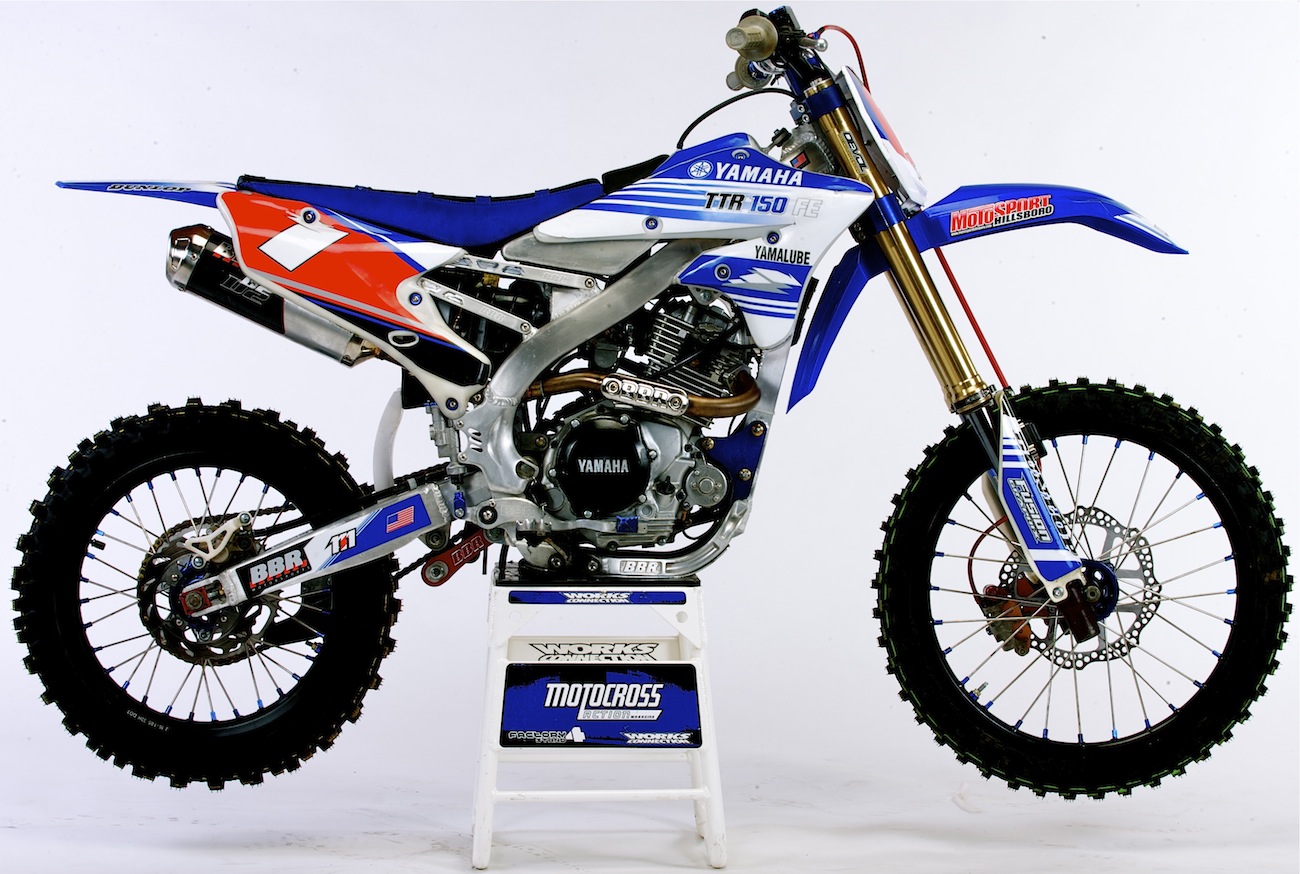 The YZ150F frame was hand-made from the ground up. The dimensions used were based on the idea of a chassis built for a big-wheel 85cc with a 19-inch front wheel and 16-inch rear wheel.
The YZ150F frame was hand-made from the ground up. The dimensions used were based on the idea of a chassis built for a big-wheel 85cc with a 19-inch front wheel and 16-inch rear wheel.
THIS BBR CHASSIS WOULD BE PERFECT FOR AN ACTUAL LORETTA LYNN SUPERMINI RACER. SWAP THE TT-R ENGINE FOR A 115cc TWO-STROKE AND YOU WOULD HAVE AN AMA NATIONAL AMATEUR-CALIBER BIKE. THE ONLY FLAW—IT WOULD BE ILLEGAL.
This bike is illegal under AMA Amateur rules, but BBR doesn’t care, because they had races in mind when they started the project. This bike was destined for Mini Moto SX, where the rules are minimal. And since Carson Brown, the son of BBR’s Duane, is a Mini Moto SX Champion, building the ultimate TT-R150 was the perfect project for the Brown brothers’ clan.
To accomplish such a feat, they began with sheets of aluminum and bent them into a look-alike three-quarter scale of a perimeter frame. They had the specifications and dimensions down on paper, but they also knew it would take more than one try to get it right. The only recognized parts that they used from another bike was a KTM 85SX seat, Honda CRF150 Expert forks, shock and swingarm (and even these parts were modified). The swingarm was cut apart to make it narrower, longer and more rigid. Minicycle swingarms have a tendency to twist under the load of a really fast rider landing jumps. The seat was cut to make access for the hidden gas cap underneath the gas tank.
As the YZ150F started taking shape, Duane and Carson began to piece the aluminum tank, subframe, triple clamps, airbox and exhaust system together. Each and every one of these parts was fabricated from scratch. In addition to boring the TT-R125 engine, they also flowed the head, added a different cam, turned the flywheel down and mapped a BBR Rev Box. On a whimsical note, while the BBR Yamaha YZ150F was as full-race as possible, they elected to throw the kickstarter and its associated hardware away and keep the TT-R125E’s electric start. A super-light Ballistic battery was used for cranking power.
What was the hardest part of the YZ150F project? The engine? The hand-made frame? The overall layout? Nope. Duane said that making the small-scale YZ250F plastic components was the hardest part to get right. The original plan was to cut down stock YZ250F plastic, but it was much too big to be of any use. So, BBR made aluminum and cardboard mock-ups of what the plastic would look like, then covered them in Bondo. The Bondo’ed panels were then shaped by hand to as close as possible to a miniature version of a YZ250F. The homegrown molds were then placed in a giant vacuum to shape the actual plastic parts.
Finally, the bike was bolted together so the testing could begin. Carson Brown may only be 16 years old, but he has grown up testing BBR machines—from pee-wees to 65s to 85s to the BBR TT-R125. Initial testing found that the bike didn’t corner very well. BBR began an extensive regimen of cutting, welding, re-cutting and re-welding both the swingarm and frame until they found the sweet spot. The solution was a longer frame and shorter swingarm than what they started with. The wheelbase ended up 2 inches longer than the generic Supermini.
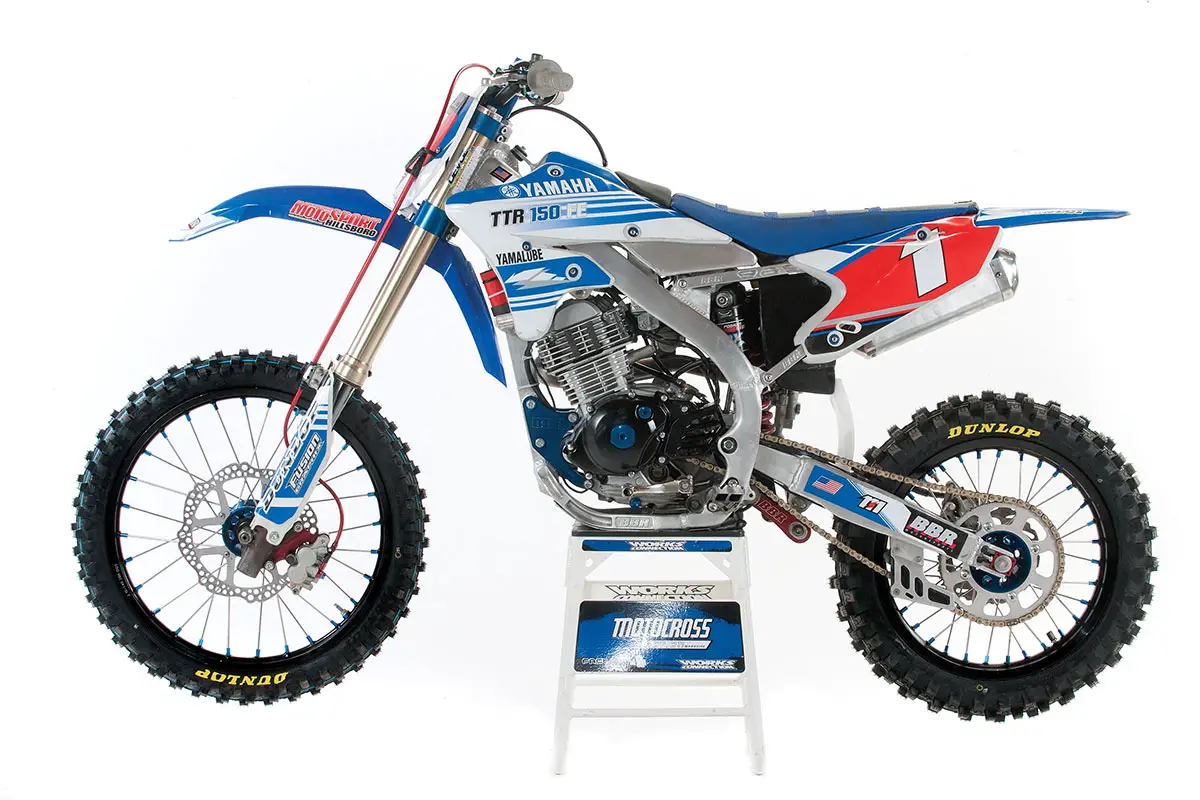
This bike was designed for both kids and adults. It’s larger than a mini but smaller than a full-size bike. It was the perfect fit for the MXA test crew. On the track this one-off bike handled with precision. The ergonomics felt right at home. You could feel the attention to detail in every aspect of it. Its DeVol-tuned suspension was plush in the first few inches of travel, then got progressively stiffer, with bottoming resistance good enough for MXA’s adult riders. It turned on a dime and had superb straight-line stability, but you had to hammer it at all times. You couldn’t slack off, because the fly in the ointment was the TT-R125 engine. Even bored out to 150cc, it just droned around the track, giving its all for the cause—but its all wasn’t enough for a big outdoor track. Obviously Yamaha had a prototype 150cc engine in their never seen YZ150F. Luckily, the BBR TT-R150 was built to be raced on an indoor Supercross arena. Inside the arena the dirt would be hard and the competition would also be droning around the track.
Don’t get us wrong, we know the TT-R125’s bones are bulletproof, but there is a limit to how much power any 150cc four-stroke powerplant can produce. This BBR chassis would be perfect for an actual Loretta Lynn Supermini racer. Swap the TT-R engine for a 115cc two-stroke and you would have an AMA National Amateur-caliber bike. The only flaw—it would be illegal.
CONTACT LIST
BBR Motorsports: www.bbrmotorsports.com
Works Connection: www.worksconnection.com
Dunlop Tire: www.dunlopmotorcycle.com
DeVol Engineering: www.devolracing.com
Fusion Graphix: www.fusiongraphix.com
Pro Wheel: www.prowheelracing.com
Renthal: www.renthal.com


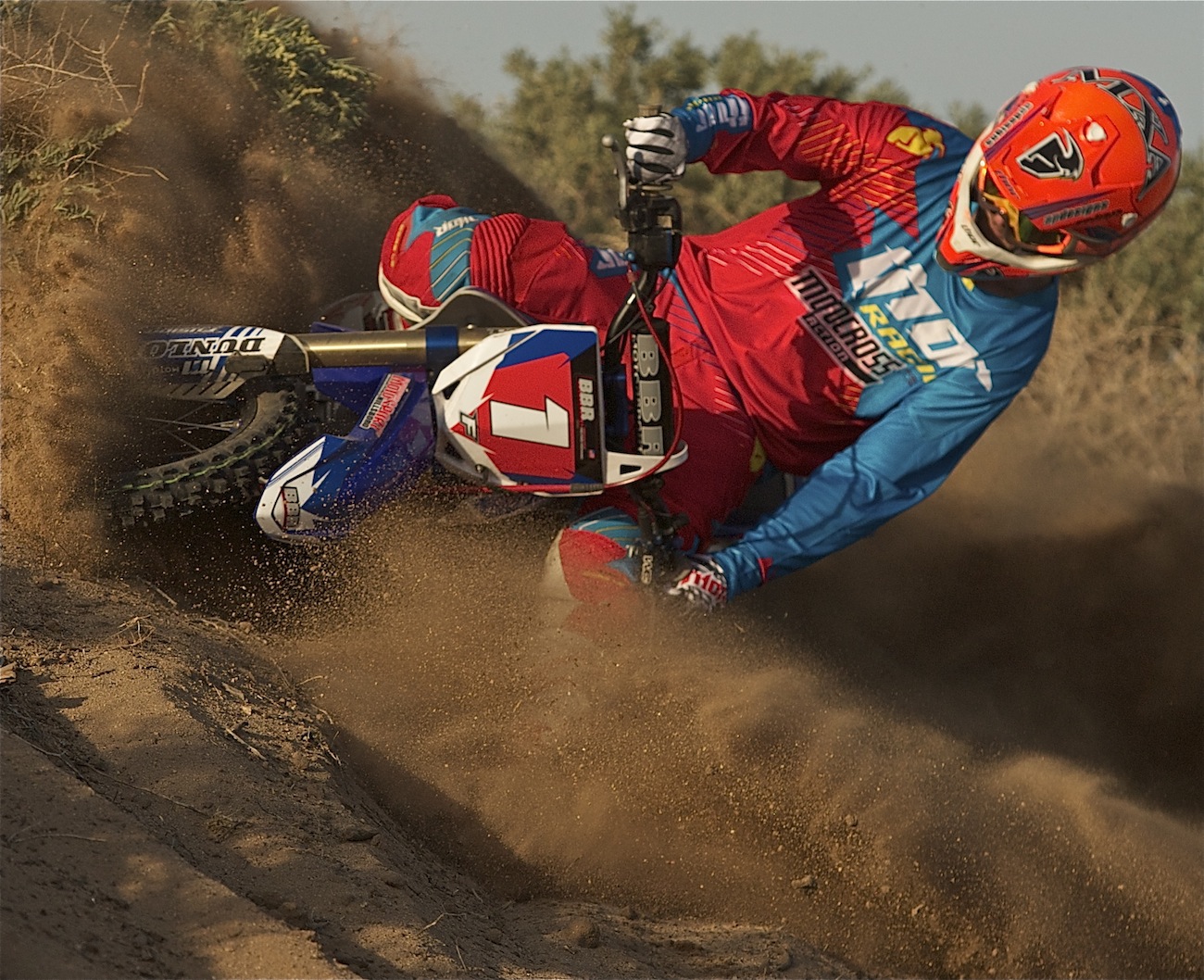
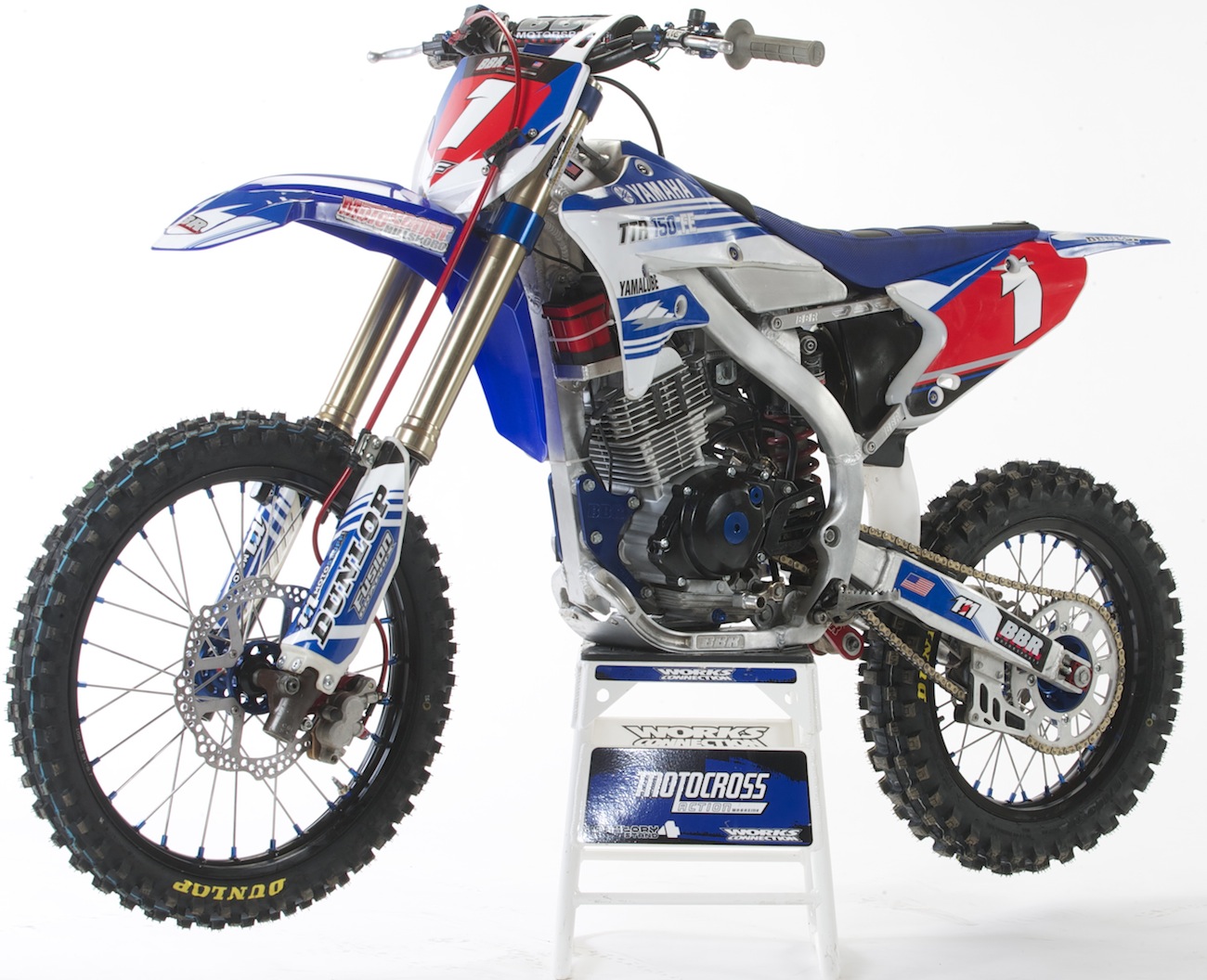

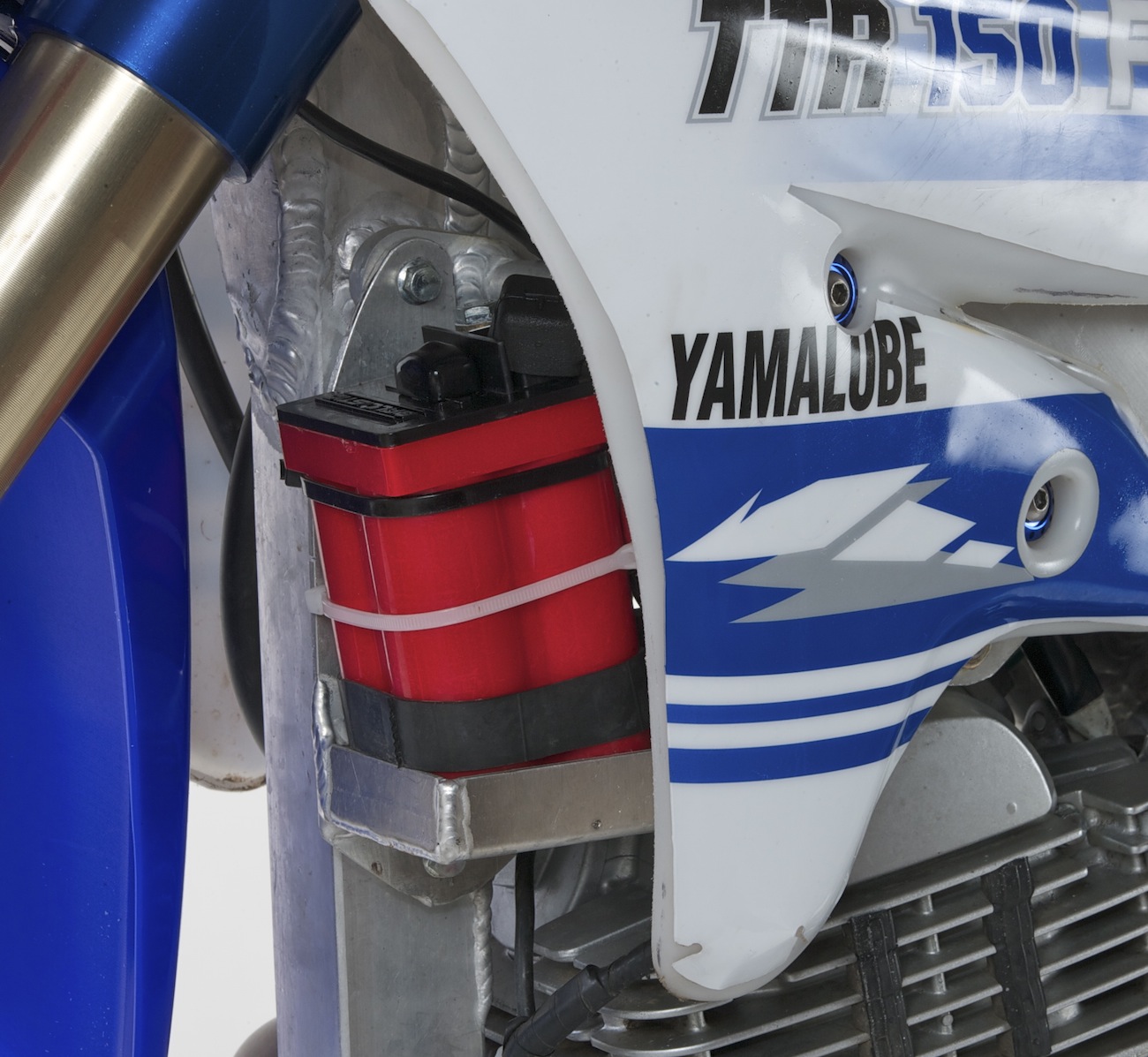
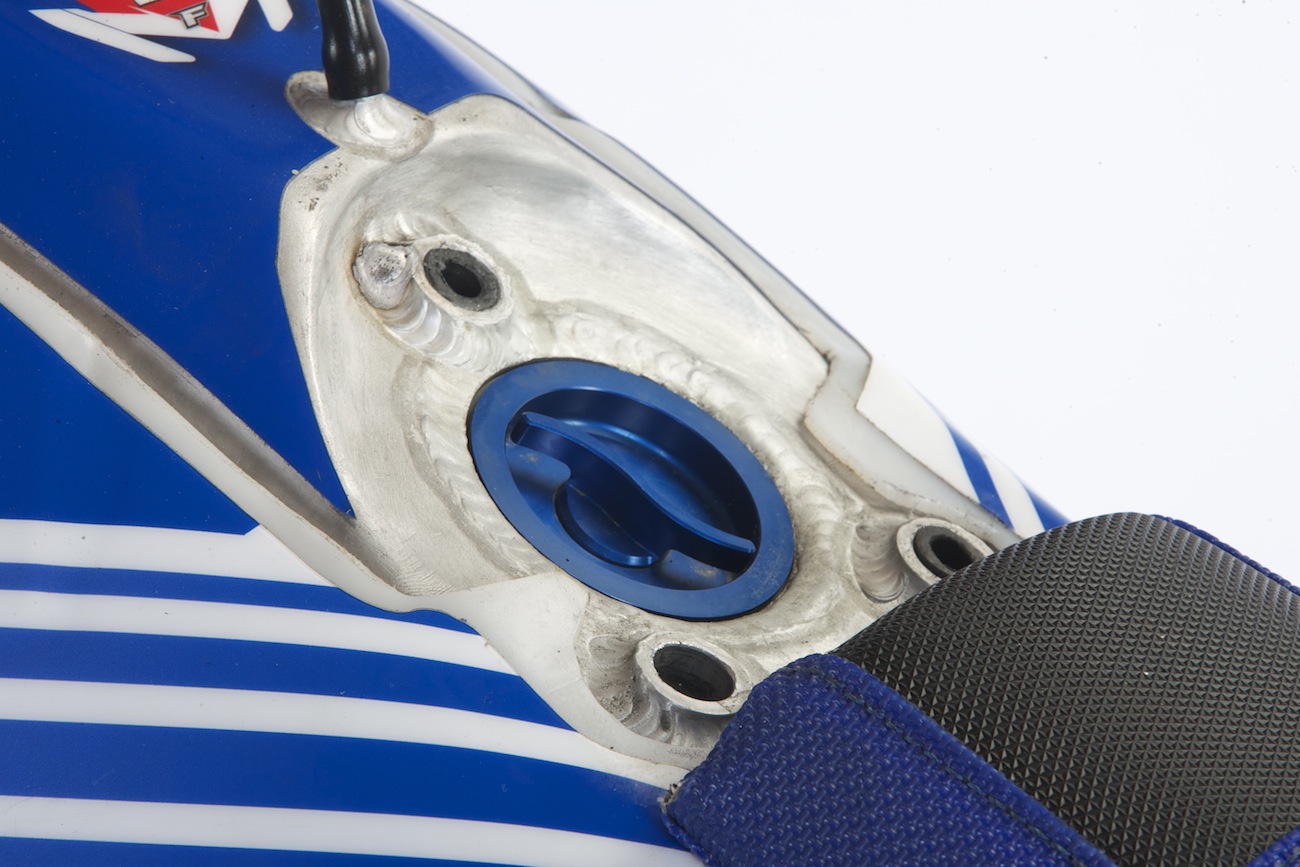
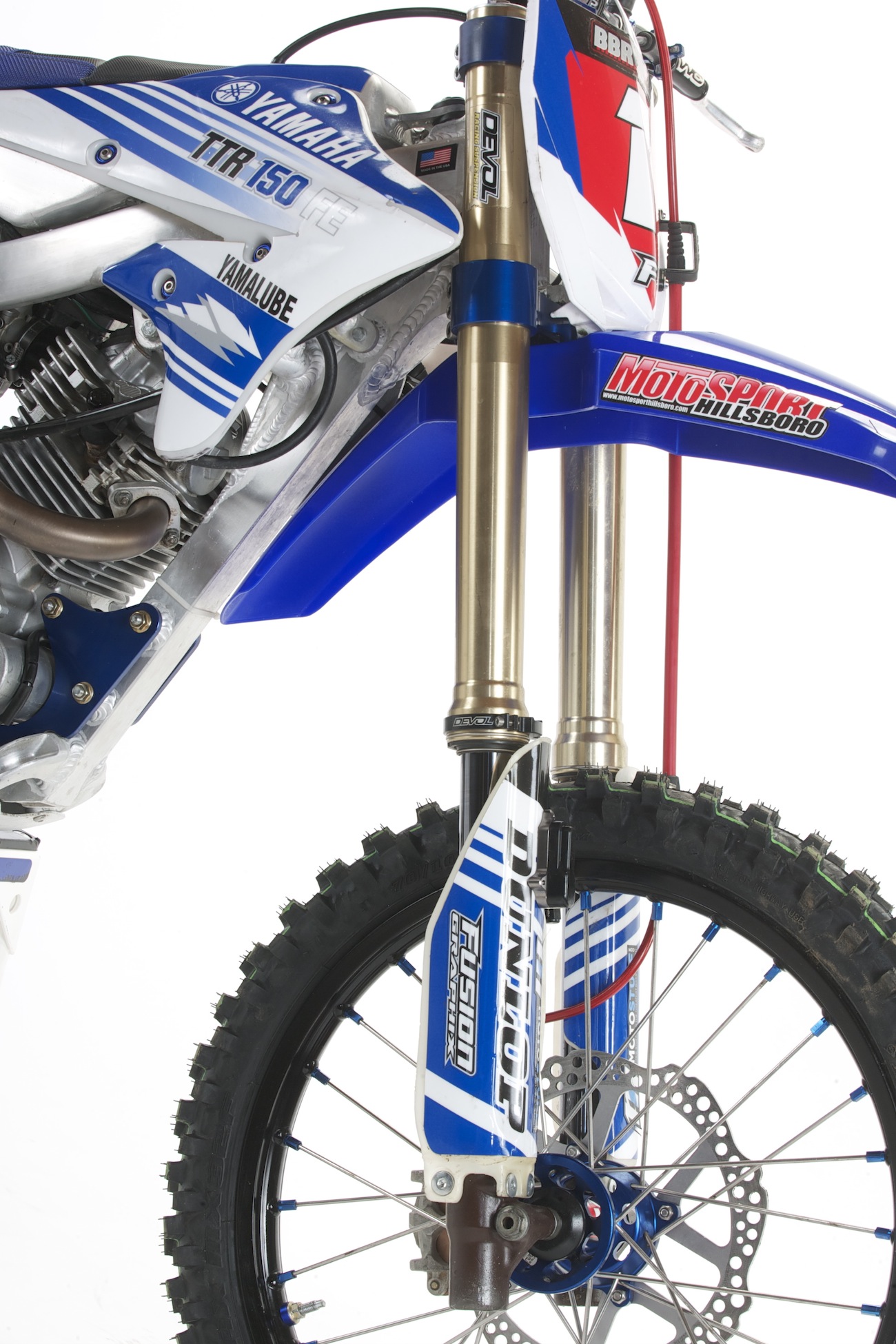




Comments are closed.